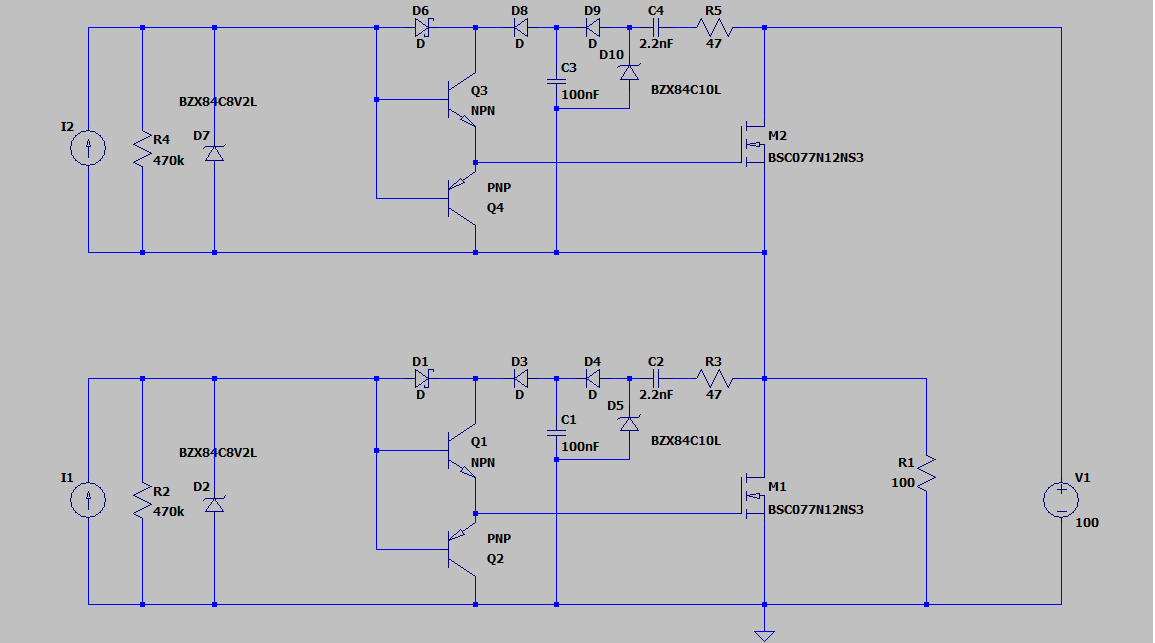You can improve the speed with an auxiliary capacitor, charged from the photovoltaic driver and a classic transistor output. It needs some ms to charge, so before starting, you should send a pulse train, and get enough voltage to be able for switching the power MOSFET. Once it is charged, you can output 100 % of the time without any additional power supply. The VOM1271 driver is simulated by a current source, resistor and zener.
 EDIT: It is possible to do with MOSFET, but to keep signal high 100% of the time, you need to invert twice. With a single stage, you will not have power to activate the gate.
EDIT: It is possible to do with MOSFET, but to keep signal high 100% of the time, you need to invert twice. With a single stage, you will not have power to activate the gate.

Also, if it is possible to connect a capacitor (like a snubber) at the power MOSFET, then you can get a axiliary supply to speed up the gate switching. The initial pulses will be low speed changing, but after some cycles you will charge the auxiliary supply, and switching on the power MOSFET will be faster. The values of this components should be ajusted for the power voltage and switching frecuency.

In simulation at 10 ms cycles, green signal is the gate voltage, blue signal is capacitor supply voltage. See difference between rise time of the first and last gate pulses.

In case you cannot wait these ms, you can use a floating power supply.




